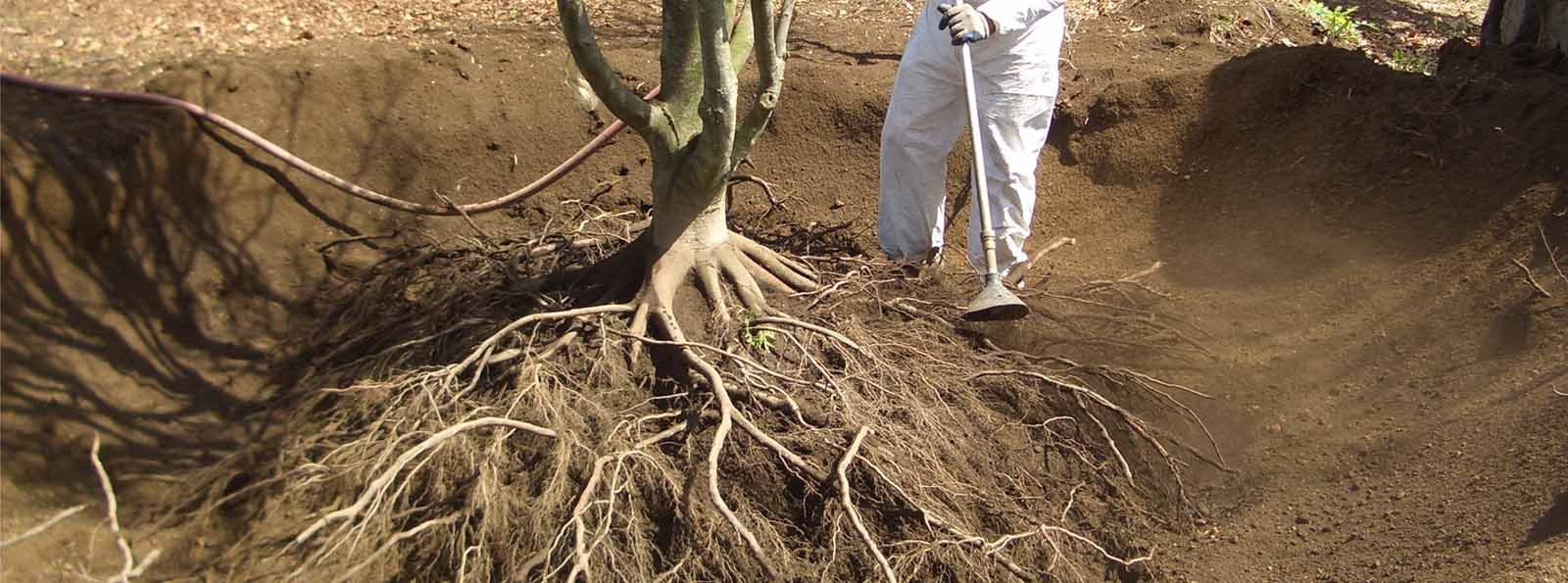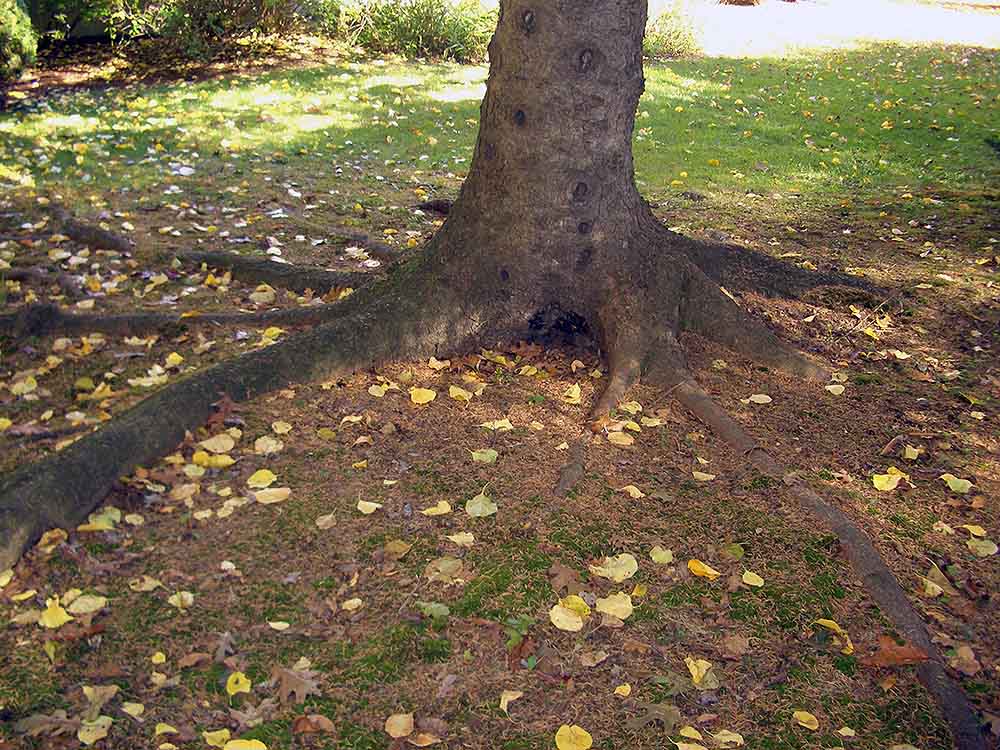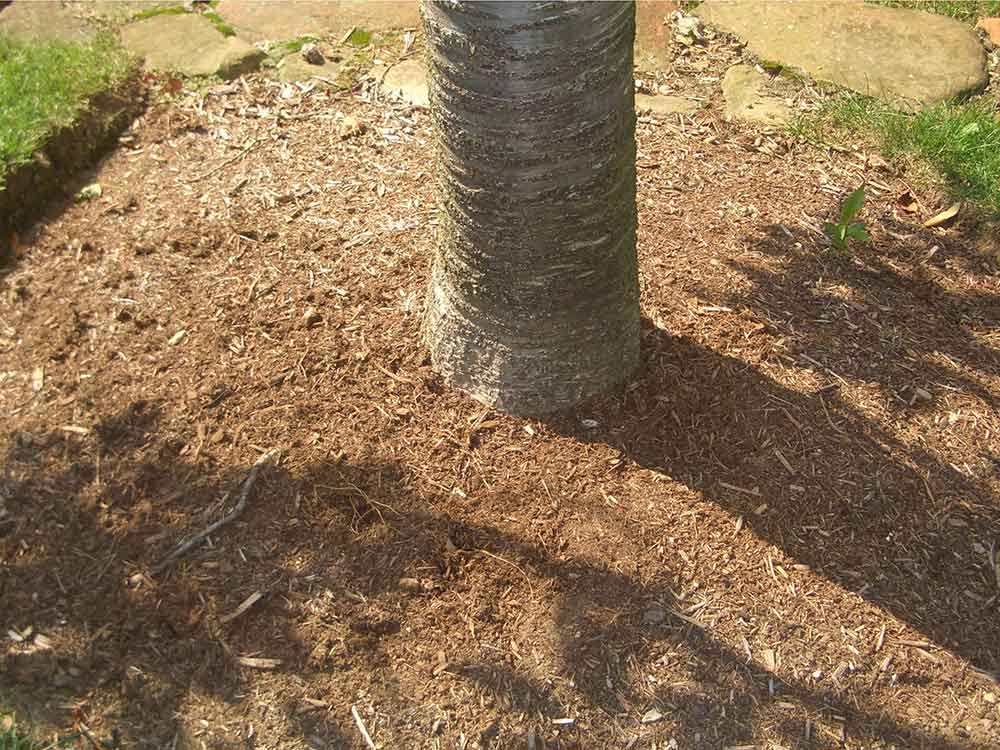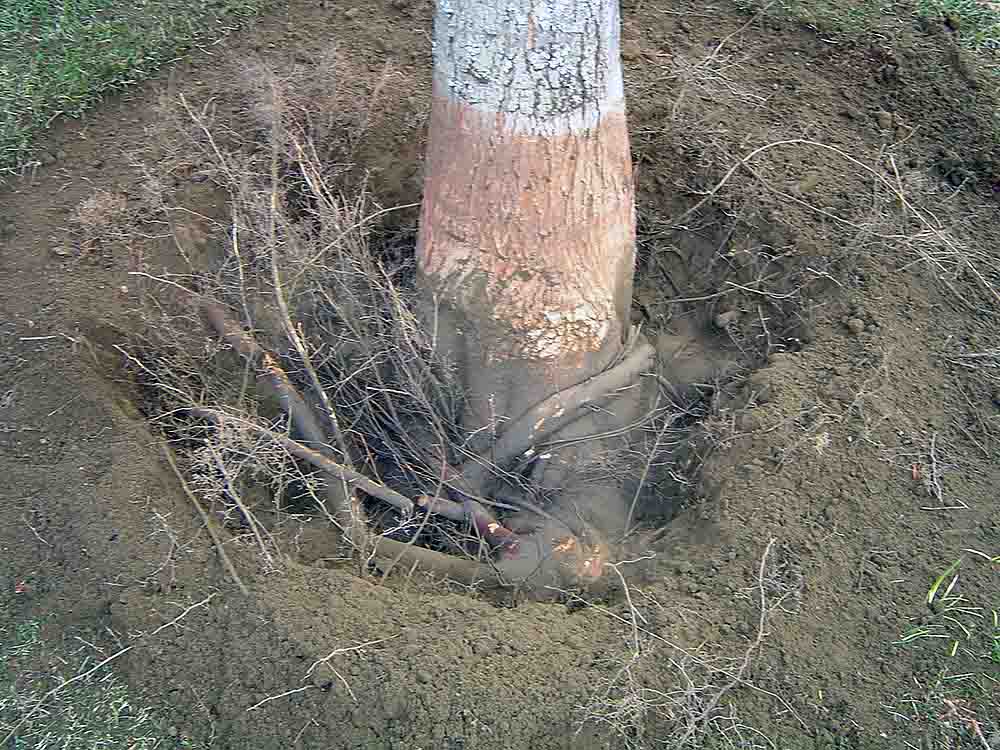
Diagnostic & Remedial Work
Diagnostics and Remedial Work
The number one problem contributing to tree decline in designed landscapes is that the trees have been planted too deep, meaning that the trunk/root flare is buried when it should really be exposed to the air. The trunk/root flare is the point on the trunk where it starts to flare out as it meets the ground. Very often the problem starts at the nursery, where the tree is initially planted too deep, and then when it’s harvested it’s wrapped in burlap with the trunk/root flare concealed before it’s sold to a landscape company. Not enough landscape installers are trained to locate the trunk/root flare and therefore don’t know how to determine the correct planting height for installation.


After the installation, the situation can become worse when landscape maintenance crews keep piling mulch on top of the trunk/root flare year after year, creating what is called a “mulch volcano”. The roots & bark of a tree breathe, and without enough oxygen the roots will grow upward toward the air, producing a secondary root system that encircles the main trunk, ultimately strangling the plant. These encircling roots are also known as “girdling roots”.


In addition to causing girdling roots, excessive soil or mulch against the trunk of the tree can slow down or stop conduction of water and nutrients from the roots to the leaves, further compounding the problem. The dieback symptoms from girdling roots typically do not appear until 8-12 years after the tree has been planted, but improper planting can be identified much sooner.
The Foti Landscape crew is highly trained in identifying problems caused by improper planting depth and providing remedial services using the compressed air excavation tool. Our team will be happy to diagnose an issue and help you protect your valued trees and shrubs.

